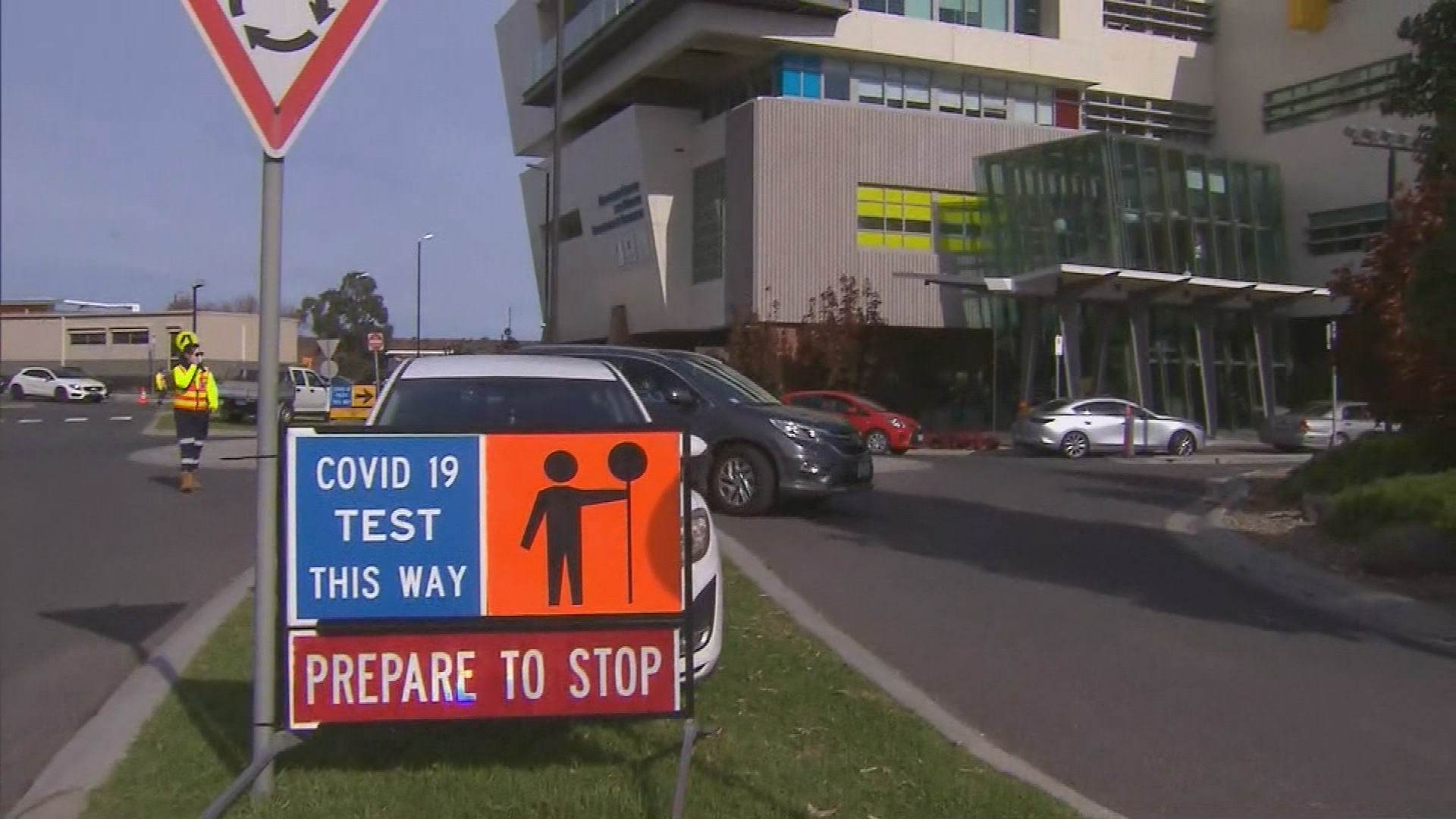As Victorian health authorities race to contain a COVID-19 outbreak in Melbourne's north, states and territories around Australia have implemented restrictions to limit the spread of the virus across borders.
The changes come after four people, all from the one extended Melbourne family, tested positive to coronavirus yesterday. A fifth case, a man in his 60s, tested positive to the virus today.
The cases are across three households and at least one is believed to have been highly contagious during their exposure period.
LIVE UPDATES: Long queues at Melbourne virus testing sites

Victoria's Department of Health is continuing to update its list of exposure sites where community transmission may have occurred.
Several states and territories now require interstate travellers who have visited any of the listed locations to get tested and self-isolate immediately.
Some states have also limited entry into Victoria.
READ MORE: New restrictions in Victoria after fifth COVID-19 case
Here is a state-by-state breakdown of how governments are reacting to the Melbourne cluster.
New South Wales and the ACT
Everyone arriving in NSW, whether by air, rail or road, who has been in the Greater Melbourne area, is required to fill out a travel declaration form confirming they have not visited a venue of concern as listed on the Victorian Government website, NSW Health says.
Anyone who has visited areas of concern will be required to self-isolate for 14 days.
Anyone who has visited Melbourne since May 10 and has been to one of the listed exposure sites has also been urged to contact NSW Health to ensure they are meeting the state's isolation and testing requirements.
ACT Health said resident who are already in or entering the ACT and have been to one of the following close contact exposure locations in Melbourne at the dates and times specified must:
- immediately quarantine for 14 days since last attending the venue
- call ACT Health on (02) 5124 6209
- get tested for COVID-19, regardless of whether symptoms are present, as advised by an authorised person within ACT Health.
Non-ACT residents who have been to a close contact exposure location in Melbourne must not enter the ACT unless they obtain an exemption before arriving. Non-ACT residents who are already in the ACT must comply with the requirements for ACT residents above.
https://twitter.com/ACTHealth/status/1396757919413071872?ref_src=twsrc%5EtfwEXPLAINED: Guest limits, mask rules - All the new rules for Melbourne
https://twitter.com/NSWHealth/status/1396717269372129281NSW Premier Gladys Berejiklian yesterday said it is "way too early" to declare the suburbs around northern Melbourne a COVID-19 hotspot after the four cases were confirmed yesterday.
Ms Berejiklian said her team would continue to update the community with the latest information however details surrounding the cases remained "preliminary".
"We've been down this road before, we need to expect outbreaks," she said.
Queensland
Anyone in Queensland who has been to one of the declared exposure sites in Victoria during the risk period specified is automatically required to quarantine.
Chief Health Officer Dr Jeannette Young also urged people against travelling to Melbourne's north.
"In light of these new cases, I urge everyone to reconsider their need to travel to Melbourne's northern suburbs," Dr Young said.
https://twitter.com/AnnastaciaMP/status/1396724305891782661"From 1am Wednesday, if you are entering Queensland and have been to any of the Victorian exposure sites at the time specified, you will need to quarantine for 14 days in government-arranged accommodation.
"If you have been to any of these sites and are already in Queensland, you must immediately travel by private transport directly to your home or accommodation and quarantine.
People entering Queensland will also need to complete the Queensland Health online contact tracing self-assessment form and get tested immediately.
South Australia
People in South Australia prior to 8.25pm on May 24 who have visited tier one and tier two exposure sites listed by the Victorian government are now required to follow level four restrictions including the following:
- Must reside and remained quarantined and segregated from other people at a suitable place for 14 days.
- The person must submit to a COVID-19 test within 24 hours after arrival in South Australia and on days five and 13.
- Must wear a face mask which covers their mouth and nose at any time that the person comes in contact with the public for 14 days after their arrival into South Australia.
After 8.25pm on May 24, all people who have been at a tier one or tier two exposure site are now subject to level six restrictions and are not permitted to enter SA.
The majority of these people should already be undertaking 14 days quarantine in Victoria and are not permitted to leave quarantine.
https://twitter.com/RoryMcClaren9/status/1396990796541267971https://twitter.com/SAPoliceNews/status/1396799644840042499Western Australia
Anyone who had visited exposure sites in Victoria at the relevant times should get tested immediately for COVID-19 and quarantine for 14 days from the date of exposure.
WA's Acting Chief Health Officer Dr Paul Armstrong said he would be notified if any close or casual contacts were found to be in Western Australia for follow-up by the public health team.
"We will continue to monitor the situation in Victoria very closely and issue updated health advice as and when required," he said.
Tasmania
Travellers who have visited any of Victoria's listed exposure sites will not be allowed to travel to Tasmania unless they are classed as an essential traveller.
Those who have visited an exposure site since May 20 are required to self-isolate immediately and call the Public Health Hotline on 1800 671 738 for further advice.
from 9News https://ift.tt/3vkUlrJ
via IFTTT


0 Comments